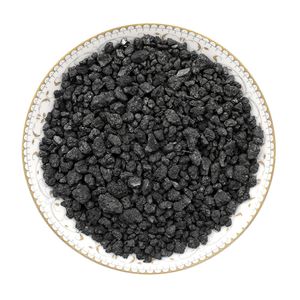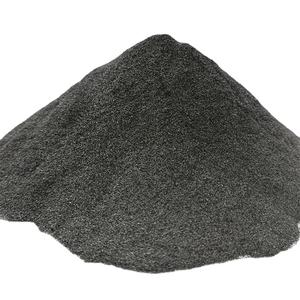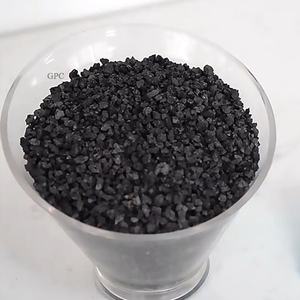Overview of Laboratory Chemical Vapor Deposition/CVD system/Graphene and Carbon Nanotube Deposition system
Graphene is a single layer of carbon atoms arranged in a hexagonal lattice, forming a two-dimensional material with remarkable properties. Discovered in 2004, it has since captivated the scientific community and industry alike due to its unique combination of strength, conductivity, and flexibility. Graphene is essentially a single, flat sheet of graphite, the material found in pencil lead, but its properties are vastly different when isolated into a single atomic layer.
Features of Laboratory Chemical Vapor Deposition/CVD system/Graphene and Carbon Nanotube Deposition system
-
Unmatched Strength: Graphene is the strongest known material, with a tensile strength of around 130 gigapascals, surpassing steel by a factor of over 100.
-
Extreme Flexibility: Despite its strength, graphene is highly flexible and can be bent, twisted, or rolled without breaking.
-
Exceptional Electrical Conductivity: It conducts electricity exceptionally well, with electrons moving at velocities approaching the speed of light, making it ideal for electronics.
-
Thermal Conductivity: Graphene is also an excellent thermal conductor, dispersing heat efficiently, useful in heat management applications.
-
Transparency: It is nearly transparent, absorbing only 2.3% of light, which, coupled with its conductivity, makes it suitable for transparent electrodes in displays.
-
Chemically Inert: Graphene is highly resistant to corrosion and stable under a wide range of chemical conditions.

(Laboratory Chemical Vapor Deposition/CVD system/Graphene and Carbon Nanotube Deposition system)
Parameter of Laboratory Chemical Vapor Deposition/CVD system/Graphene and Carbon Nanotube Deposition system
Laboratory Chemical Vapor Deposition (CVD) systems are sophisticated tools used for the deposition of thin films, nanostructures, and two-dimensional materials such as graphene and carbon nanotubes. These systems operate through the use of chemical reactions that occur when a gas mixture is introduced into a high-temperature environment, allowing for the controlled synthesis of materials with precise compositions and structures.
### Key Parameters in CVD Systems for Graphene and Carbon Nanotube Deposition:
1. **Temperature**: The temperature within the reactor chamber is crucial as it determines the rate of chemical reactions and the growth kinetics of the deposited material. For graphene and carbon nanotubes, temperatures ranging from 600°C to 1200°C are typically employed depending on the specific synthesis route.
2. **Pressure**: The pressure inside the CVD chamber influences the vapor concentration and the likelihood of reactions between precursor gases. Lower pressures can promote more uniform deposition but may require longer processing times.
3. **Flow Rates**: Precise control over the flow rates of various gases is essential to ensure optimal reaction conditions. This includes the carrier gas, which transports the reactants to the surface, and the reactant gases themselves, which interact to form the desired material.
4. **Substrate Material and Geometry**: The choice of substrate affects the quality and properties of the deposited material. For graphene and carbon nanotubes, substrates like silicon, sapphire, or copper can be used. The substrate’s surface chemistry and morphology play a significant role in influencing the nucleation and growth patterns of the deposited material.
5. **Preparation of Reactant Gases**: The purity and composition of the gases used in the process are critical. Contaminants can affect the quality of the deposited material. Often, gases are purified and sometimes diluted or mixed with other gases to achieve the desired chemical reaction conditions.
6. **Cooling Mechanisms**: Efficient cooling systems are necessary to prevent overheating during the process, ensuring safety and maintaining the integrity of the synthesized materials.
7. **Deposition Time**: The duration of the deposition process is another important parameter. Longer times can lead to thicker layers but may also increase the risk of defects or unwanted reactions.
8. **Post-Deposition Treatment**: After deposition, the samples often undergo post-processing steps such as annealing or cleaning to improve their properties or remove any residual contaminants.
### Conclusion:
The parameters mentioned above are crucial in the operation of a CVD system designed for the deposition of graphene and carbon nanotubes. Precise control over these variables allows researchers to tailor the synthesis process to their specific needs, leading to the production of high-quality materials with tailored properties for various applications in electronics, energy storage, and biotechnology. As research continues to advance in this field, further optimization of these parameters will likely lead to even more refined and versatile deposition techniques.

(Laboratory Chemical Vapor Deposition/CVD system/Graphene and Carbon Nanotube Deposition system)
Applications of Laboratory Chemical Vapor Deposition/CVD system/Graphene and Carbon Nanotube Deposition system
-
Electronics: In transistors, touchscreens, and flexible electronics due to its conductivity and flexibility, potentially revolutionizing device design.
-
Energy Storage: As electrodes in batteries and supercapacitors, improving energy storage capacity and charging rates.
-
Sensors: High sensitivity and conductivity make graphene ideal for chemical and biological sensors.
-
Composites: Reinforcing materials like plastics, metals, and concrete to enhance strength and conductivity.
-
Water Filtration: Its atomically thin structure enables efficient filtration of contaminants, including salts, viruses, and bacteria.
-
Medicine: Potential uses include drug delivery systems and bio-sensors due to its biocompatibility and unique properties.
Company Profile
Graphne Aerogels is a trusted global chemical material supplier & manufacturer with over 12-year-experience in providing super high-quality aerogel and graphene products.
The company has a professional technical department and Quality Supervision Department, a well-equipped laboratory, and equipped with advanced testing equipment and after-sales customer service center.
If you are looking for high-quality graphene, aerogel and relative products, please feel free to contact us or click on the needed products to send an inquiry.
Payment Methods
L/C, T/T, Western Union, Paypal, Credit Card etc.
Shipment
It could be shipped by sea, by air, or by reveal ASAP as soon as repayment receipt.
FAQs of Laboratory Chemical Vapor Deposition/CVD system/Graphene and Carbon Nanotube Deposition system
Q: Is Laboratory Chemical Vapor Deposition/CVD system/Graphene and Carbon Nanotube Deposition system safe for the environment and human health?
A: Research on the environmental and health impacts of graphene is ongoing. While graphene itself is considered relatively inert, concerns exist regarding the potential toxicity of graphene oxide and other derivatives, especially in aquatic ecosystems.
Q: How is Laboratory Chemical Vapor Deposition/CVD system/Graphene and Carbon Nanotube Deposition system produced?
A: Graphene can be produced through several methods, including mechanical exfoliation (peeling layers off graphite using adhesive tape), chemical vapor deposition (CVD), and chemical reduction of graphene oxide.
Q: Why is Laboratory Chemical Vapor Deposition/CVD system/Graphene and Carbon Nanotube Deposition system not yet widely used in commercial products?
A: Challenges in producing high-quality graphene at a scalable and cost-effective manner have hindered its widespread adoption. Additionally, integrating graphene into existing manufacturing processes requires further technological advancements.
Q: Can Laboratory Chemical Vapor Deposition/CVD system/Graphene and Carbon Nanotube Deposition system be used to make stronger and lighter materials?
A: Absolutely, graphene’s addition to composite materials significantly improves their strength and stiffness while reducing weight, making them ideal for aerospace, automotive, and sports equipment.
Q: Does Laboratory Chemical Vapor Deposition/CVD system/Graphene and Carbon Nanotube Deposition system have any limitations?
A: While graphene possesses outstanding properties, challenges remain in harnessing its full potential, such as achieving high-quality mass production, managing its tendency to restack in composites, and addressing potential health and environmental concerns.

(Laboratory Chemical Vapor Deposition/CVD system/Graphene and Carbon Nanotube Deposition system)






